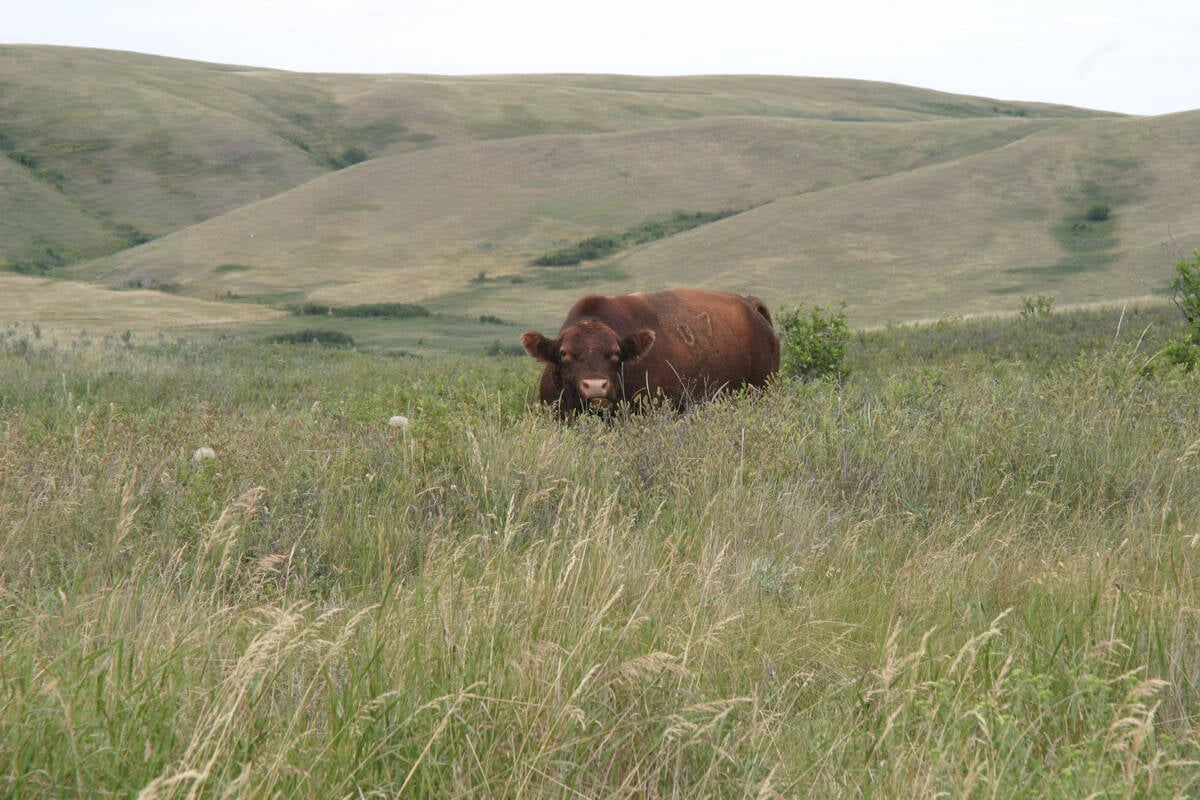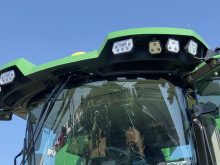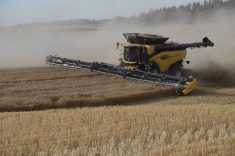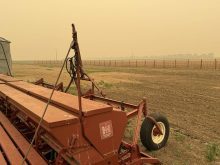New Holland will use selective catalytic reduction in equipment larger than 100 horsepower to keep emissions below North American regulatory levels.
SCR requires that diesel exhaust fluid (DEF) be added to the exhaust system to burn offending emissions before they are released into the atmosphere.
This is the same strategy employed by Case IH, New Holland and Agco.
John Deere has opted to use diesel-fired controls, reburning of exhaust and filtration to reach the January 2011 legislated emissions goals.
Steven Meinzen of John Deere manages the company’s Tier 4 integration project.
Read Also

Saskatchewan puts crown land auction on hold
Auctions of Saskatchewan crown lease land are once again on hold.
He said the best way to reduce emissions is to be efficient in the production of power and leave as little unburned fuel as possible. This has been the approach of all the manufacturers.
“Beyond that, there are two ways, right now, to get emissions down; filter them out or burn them. Deere is using a diesel oxidation catalyst and diesel particulate filter to trap unburned particles and burn them at high temperatures prior to being exhausted.”
Engine manufacturers have had to choose at least one system to meet the U.S. Environmental Protection Agency’s interim Tier 4 and the European Union’s stage 3B standards.
The new regulations require off-highway machines to reduce emissions by 90 percent of particulate matter and 50 percent of oxides of nitrogen compared to current standards.
Additional cooling of the engines is required for some designs in the case of filtration and re-burning.
Highway trucks have been meeting tougher requirements for some time so engine manufacturers, which often build farm machinery engines as well, have adopted SCR and exhaust gas recirculation (EGR) combined with filtration.
Cummins recently released its new off-highway QSB 6.7 litre and QSL 9 litre engines that rely on EGR and filtration with air pushed by variable displacement turbochargers, said Hugh Foden of Cummins’ off-highway division.
The company said it opted for EGR because it avoided adding additional fluid.
On-road applications by Cummins use a combination of SCR and ERG to meet the tougher highway standards that came into place in 2010.
David Greenberg of New Holland said the new Tier 4 engines won’t depend on EGR, which means engines won’t need large additions to their cooling systems.
That company has just released its new line of T9 series tractors. The largest, the T9670, is the 600 h.p. sister to the Case IH Steiger 600. The machines share the title of highest horsepower for a currently manufactured tractor.
The engine is a Fiat Power Train Technology 9 litre engine that is also found in the new T8 series tractors, down to 235 hp.
Deere and Agco say they have solved the challenge of additional cooling by using larger radiators and new design features that improve heat removal.
Jim Walker of Case IH said in a meeting in Chicago in August that the company’s latest tractors in the Steiger and Magnum lines feature improved cooling systems but are not entirely related to the new Tier 4 changes.
“These engines are generating more power from less fuel,” he said of the similar systems used by sister New Holland machines.
Walker said his company feels its avoidance of EGR has produced cleaner running engines that are able to have longer service intervals between oil changes.
“And without a filtration system to maintain,” he added.
The price tag on all brands of 2011 tractors, combines and silage harvesters will reflect the added emissions technology, between $6,000 and $10,000 more than in 2010.
Walker said markets such as Brazil and the former Soviet Union, which aren’t subject to the environmental regulations won’t have additional emissions reduction gear installed.
All companies agree they will need to add DEF and EGR when more stringent requirements for off-road applications come into effect in 2014.
DEF is subject to freezing, which means machinery tanks and lines will require built-in heating to keep the additive available.
However, engines will run for short periods without a supply.
Bulk supplies need to be maintained above their freezing temperature of -11 C.
DEF will be available through machinery and fuel dealers.
Some machinery companies will also offer bulk tanks and pumps to producers who buy new machinery that use the technology.
DEERE’S INTERIM TIER 4 COMPLIANT PSX LINE
Fresh air
SELECTIVE CATALYTIC REDUCTION AT WORK
The pump and injection system unit, in reaction to the emissions in the tractor’s exhaust, varies the amount of urea fluid that is added to the exhaust stream.
Tank located beside diesel filler holds diesel exhaust fluid or Ad Blue. After cooler
Inside the catalytic chamber, nitrogen oxide is converted to nitrogen gas and water vapour.
Source: Agco | MICHELLE HOULDEN GRAPHICS
















